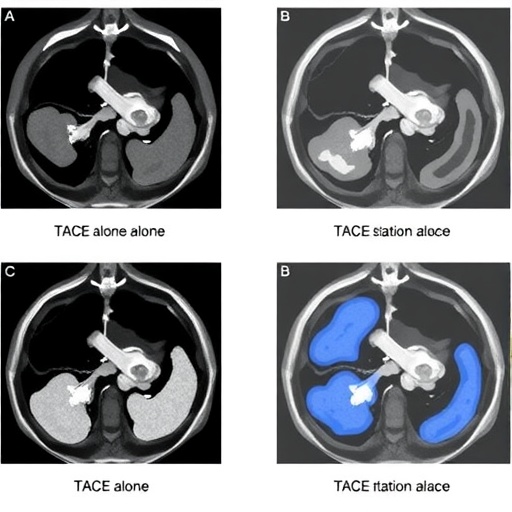PROTECT YOUR DNA WITH QUANTUM TECHNOLOGY
Orgo-Life the new way to the future Advertising by AdpathwayIn recent years, the integration of telemedicine into healthcare systems has transformed the way patients access treatment, especially for chronic conditions like hepatitis C. A novel study led by Talal et al. has addressed this transformative approach in treatment delivery, particularly in the context of opioid treatment programs (OTPs). This research, which focuses on the effectiveness and implementation of a telemedicine model for hepatitis C treatment, offers insightful implications for public health and medical practice.
The study presents a comprehensive analysis of how opioid treatment programs can incorporate telemedicine to enhance treatment outcomes for individuals affected by hepatitis C. This dual focus on effectiveness and implementation stands out in the literature, filling a critical gap that often exists in research where either one aspect is highlighted at the expense of another. By conducting a hybrid effectiveness-implementation analysis, the researchers aim to provide a robust framework for understanding telemedicine’s role in improving access and success rates.
Moreover, the mission of this research aligns with broader public health goals to combat infectious diseases and improve treatment delivery for populations that are often marginalized. The opioid crisis has disproportionately affected certain demographics, often leaving patients with comorbid conditions like hepatitis C without adequate treatment options. This urgency necessitates innovative approaches that can bridge gaps in healthcare access and operational barriers.
The integration of telemedicine into opioid treatment programs offers a respite from traditional barriers such as travel, time, and stigma associated with in-person visits. Telemedicine allows healthcare providers to reach patients in their homes, which can be particularly beneficial for those who might face challenges in attending regular clinic visits. This model not only promotes convenience but also adheres to the principles of patient-centered care, which prioritize the needs and circumstances of patients.
In their research, Talal and colleagues outline specific strategies employed within their telemedicine model, which includes remote monitoring, virtual consultations, and requisition of laboratory tests from home. This approach can lead to earlier detection and treatment initiation for hepatitis C, a critical factor given the progressive nature of the disease and its potential complications, including liver disease and cancer.
Furthermore, the study emphasizes the importance of leveraging technology not just for treatment, but also for education and support. Engaging patients through digital platforms can enhance their understanding of hepatitis C, encourage adherence to therapy, and foster communication with healthcare providers. Telemedicine facilitates educational resources about the disease, treatment options, and lifestyle modifications that can significantly impact health outcomes.
A significant finding in this research is the identification of key components that contribute to the successful implementation of telemedicine in an OTP context. These include training for healthcare providers on technology use, ensuring robust digital infrastructure, and developing comprehensive protocols that delineate roles and responsibilities. These components are crucial to ensure that healthcare teams can effectively utilize telemedicine tools to enhance patient care.
The results of the study indicate not only an increase in treatment uptake among patients with hepatitis C but also an improvement in patient satisfaction levels, which speaks volumes about the telemedicine model’s impact. By using surveys and feedback mechanisms post-treatment, the research provides substantial insight into the user experience, revealing that patients often feel more comfortable engaging with healthcare providers in a telehealth setting than in person.
Moreover, the analysis sheds light on the cost-effectiveness of implementing telemedicine in opioid treatment programs. In a healthcare landscape where resources are often stretched thin, demonstrating financial savings while improving patient outcomes is imperative. The research outlines how telemedicine can reduce costs associated with facility overhead, transportation, and missed appointments, ultimately benefitting both healthcare systems and patients.
Talal’s research is particularly timely given the public health emergency posed by the COVID-19 pandemic. The necessity for social distancing and limited in-person interactions has accelerated the adoption of telehealth services. This study not only provides a model of care applicable today but also serves as a guide for future public health strategies aimed at addressing chronic diseases within vulnerable populations.
On a broader scale, this research echoes a crucial message: the future of healthcare must incorporate digital solutions to effectively address health disparities. As policies evolve, there is a pressing need for healthcare systems to adapt and innovate. By setting a precedent through this hybrid analysis, Talal et al. have sparked conversations about integrating telemedicine into standard care routines for hepatitis C and potentially other diseases prevalent among populations with complex healthcare needs.
In conclusion, the results from the study underscore a significant shift in how we think about treatment delivery in the modern age. Telemedicine integrated into opioid treatment programs offers a feasible solution to the ongoing struggle with hepatitis C, providing an opportunity for comprehensive care that is both accessible and patient-focused. As we advance into a more technology-driven health ecosystem, the lessons learned from this hybrid effectiveness-implementation analysis will be invaluable for shaping future healthcare strategies.
The exploration of blending telemedicine with established treatment programs signifies a progressive step toward ensuring that individuals, regardless of their circumstances, can access the care and treatment they require. As further studies emerge, the potential for telehealth to revolutionize the management of chronic diseases looks promising, fostering a health system that is inclusive, effective, and holistic.
Subject of Research: The integration of telemedicine within opioid treatment programs for hepatitis C treatment.
Article Title: Opioid treatment program-integrated facilitated telemedicine for hepatitis C treatment: a hybrid effectiveness-implementation analysis.
Article References:
Talal, A.H., Markatou, M., Zeremski, M. et al. Opioid treatment program-integrated facilitated telemedicine for hepatitis C treatment: a hybrid effectiveness-implementation analysis.
BMC Complement Med Ther 25, 377 (2025). https://doi.org/10.1186/s12906-025-05138-9
Image Credits: AI Generated
DOI: 10.1186/s12906-025-05138-9
Keywords: Telemedicine, Opioid Treatment Program, Hepatitis C, Healthcare Access, Patient-Centered Care, Effectiveness-Implementation Analysis.
Tags: chronic disease management via telemedicineeffectiveness of telemedicinehepatitis C treatment programshybrid effectiveness-implementation analysisimplementation of telemedicine modelsimproving treatment outcomes for hepatitis Cmarginalized populations and healthcareopioid crisis and infectious diseasesopioid treatment programs integrationovercoming barriers in healthcare accesspublic health implications of telemedicinetelemedicine in healthcare


 5 hours ago
10
5 hours ago
10





















 English (US) ·
English (US) ·  French (CA) ·
French (CA) ·